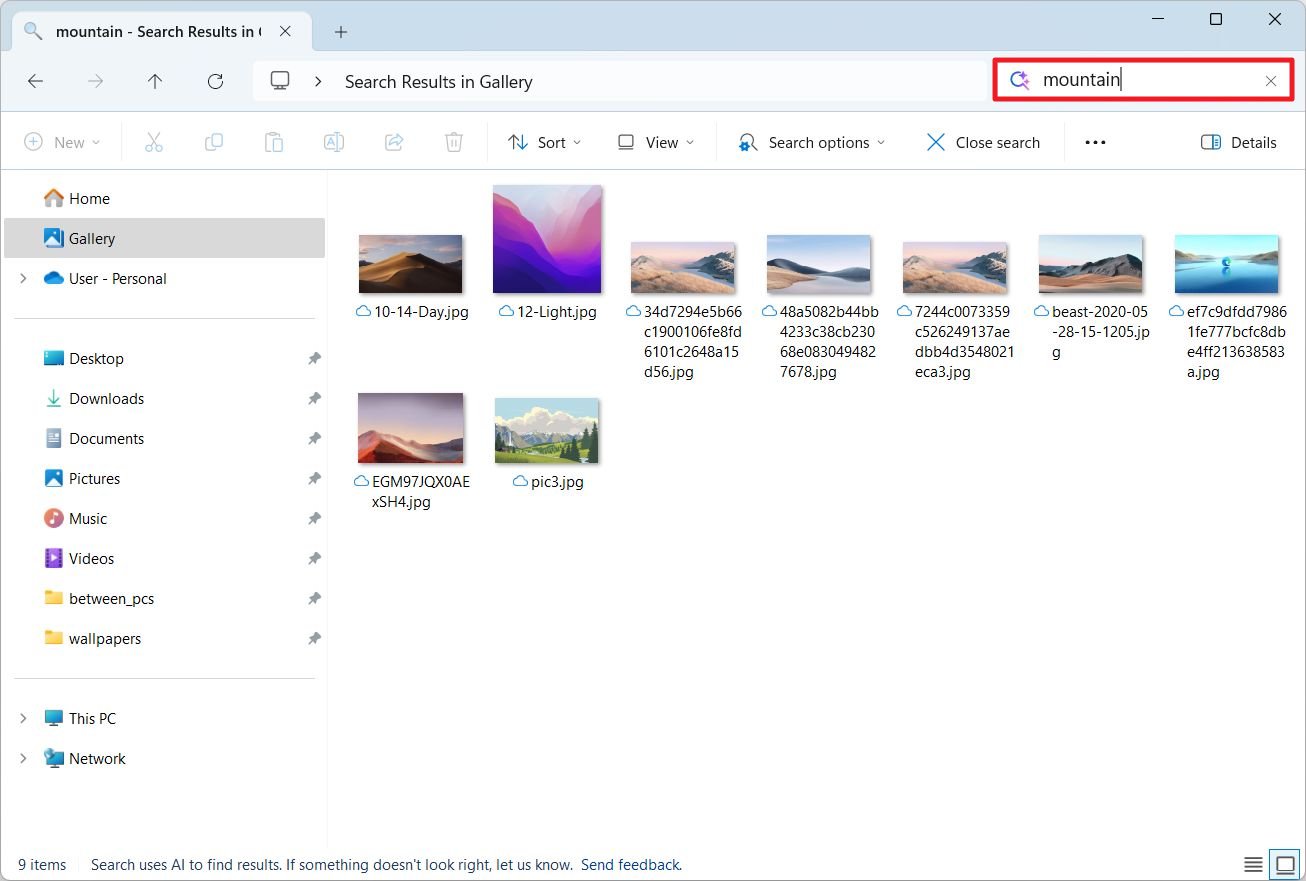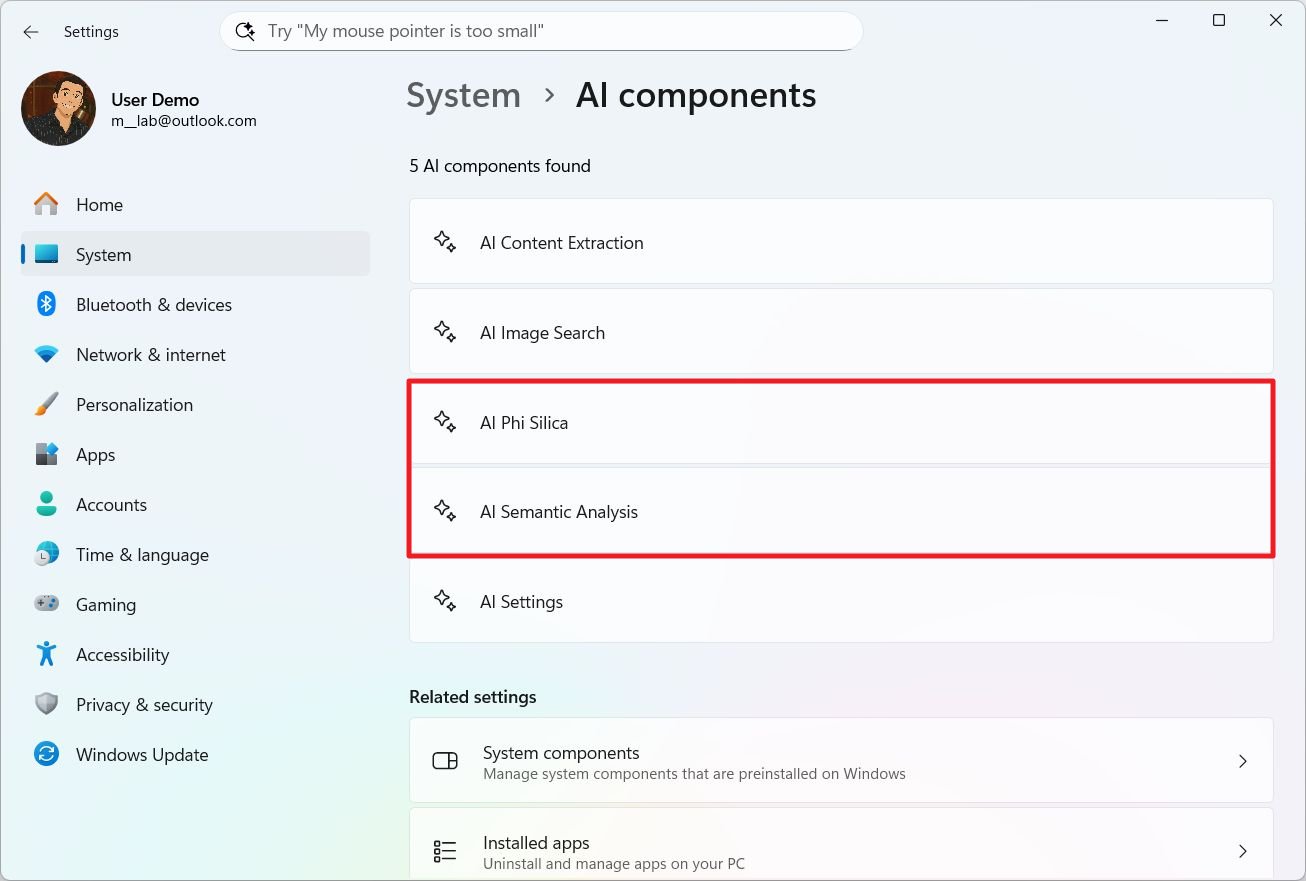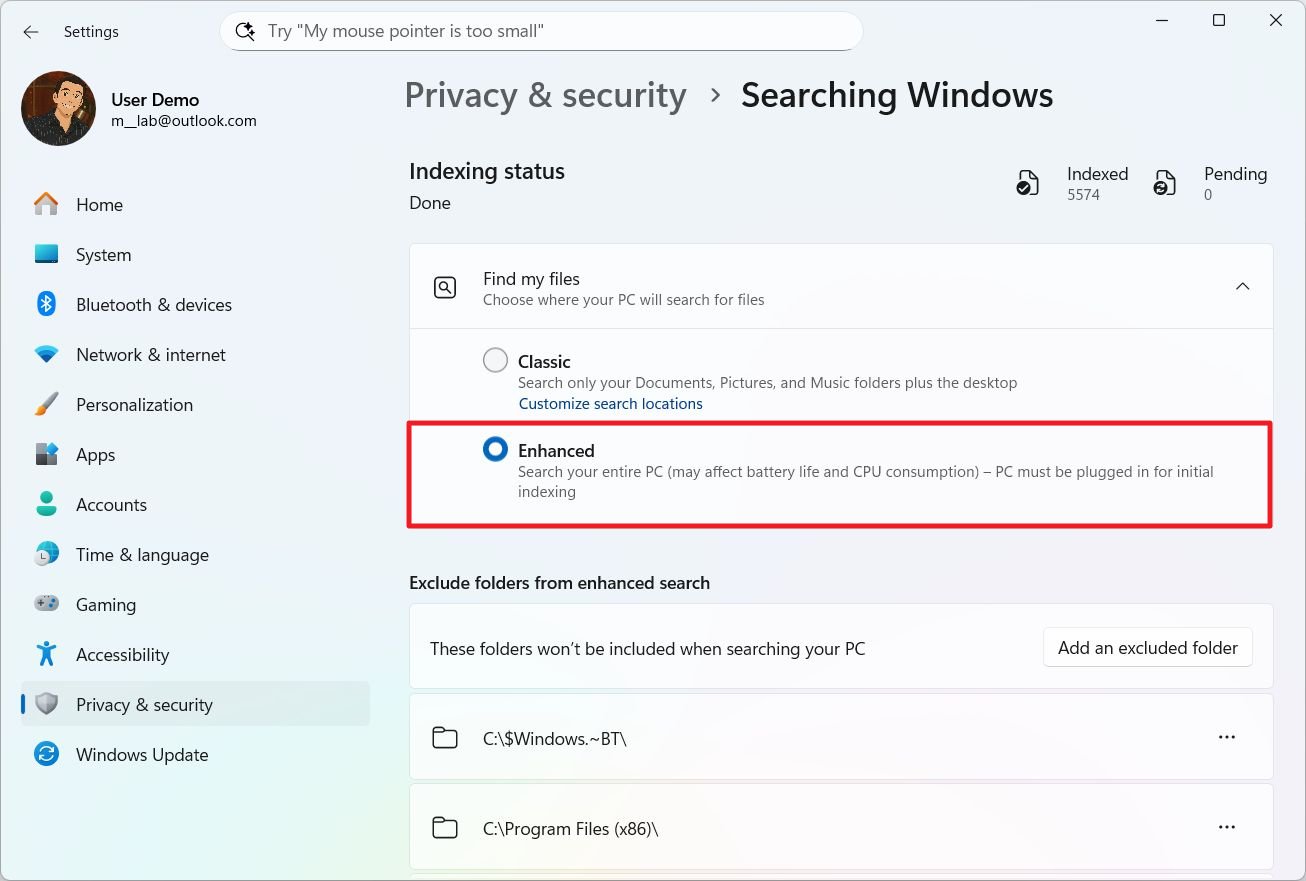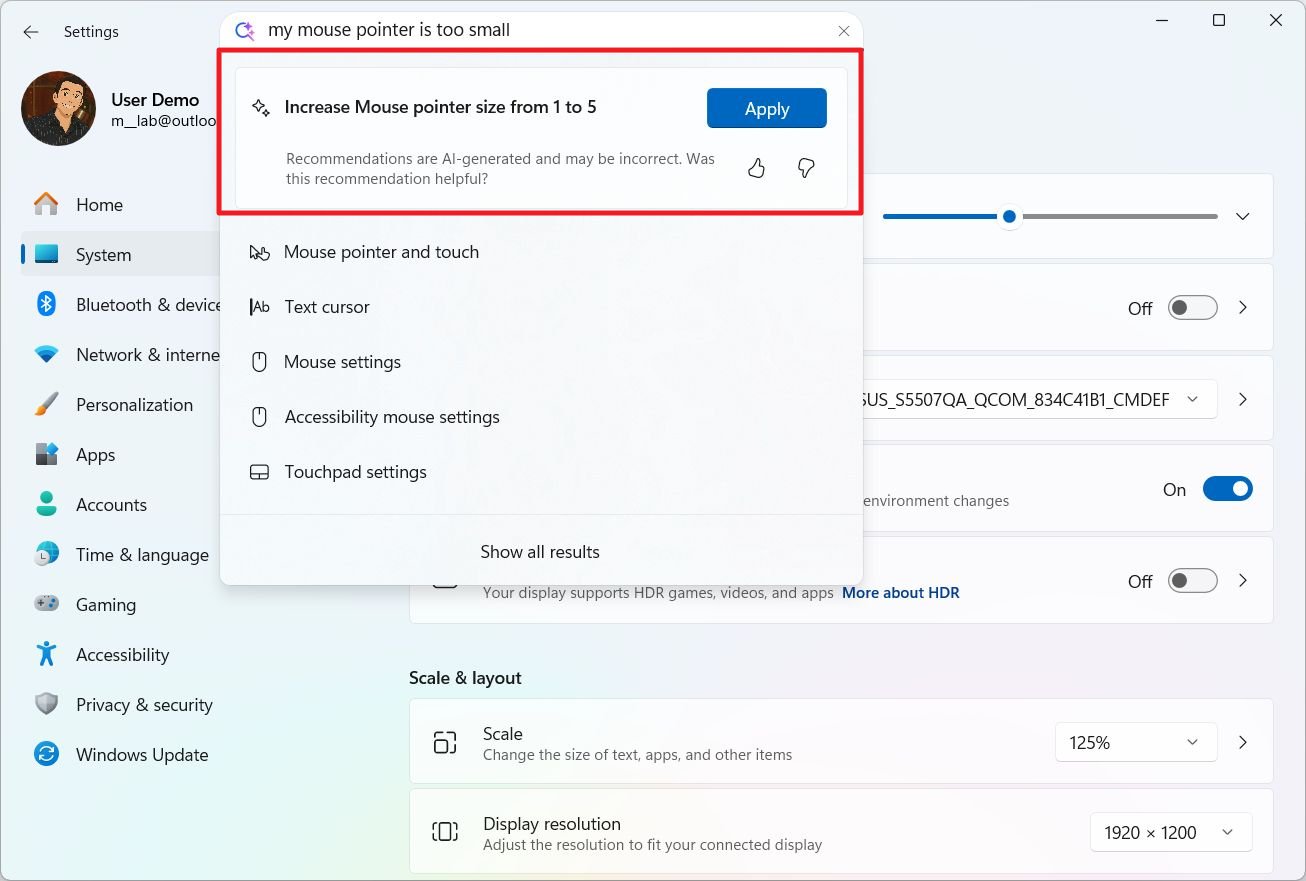How to get started with Semantic Indexing on Windows 11
Windows Search is now enhanced with AI, and here's what you need to know.
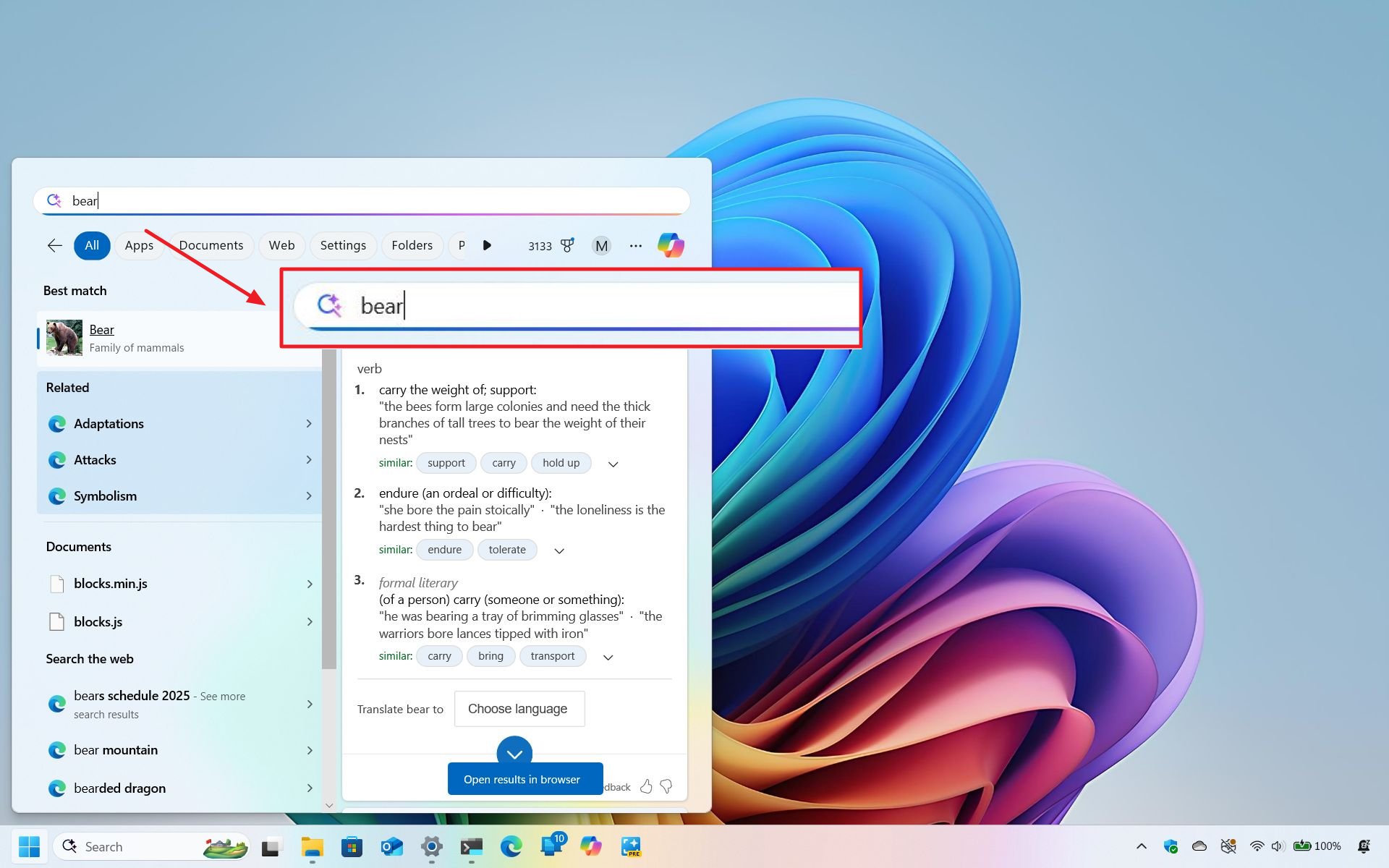
On Windows 11, Semantic Indexing is an AI feature that integrates Natural Language Processing (NLP) to enhance traditional keyword-based search. This feature doesn't replace the Windows Search experience. Instead, it complements it, allowing you to retrieve files, settings, and other content using conversational language, making the search process more intuitive and efficient.
What's Semantic Indexing?
Semantic Indexing uses AI models to understand the context and intent behind search queries. Unlike traditional search methods that rely on exact keywords, this feature interprets the meaning of queries, enabling you to find content even when you don't remember exact file names or specific keywords. For instance, searching for "photos from last summer" or "change my theme" produces relevant results based on the query's context.
Semantic Indexing features and capabilities
These are the most significant details you need to know about Semantic Indexing on Windows 11.
Natural language processing
Semantic Indexing allows you to search using everyday language. This means you can type queries like "documents from last month" or "winter vacation photos," and the system will understand and provide relevant results.
Local and cloud AI processing
The feature leverages on-device AI models, such as Phi Silica, which process data locally.
However, as part of the search improvements, when performing a search for documents or images, Windows Search can also find and retrieve files that match the context of the query or exact file name from your OneDrive cloud account.
Also, remember that starting a search from the Taskbar or Start menu will also show web results, which means that your query will leave your computer.
All the latest news, reviews, and guides for Windows and Xbox diehards.
Enable Semantic Indexing
You don't need to enable Semantic Indexing as it's part of the Windows Search experience starting with the May 2025 security update for Windows 11. However, since it depends on the system's Neural Processing Unit (NPU), the feature is only available for Copilot+ PCs.
You can confirm that your device uses Semantic Indexing for search because of the colorful icon with two stars in the search box.
Also, you can open Settings > System > AI components, and on this page, if you have the "AI Phi Silica" and "AI Semantic Analysis" components, the device is using Semantic Indexing.
It's important to note that you cannot disable the Semantic Indexing feature. However, Microsoft recommends excluding the location with files that you don't want to index with this feature from Settings > Privacy & Security > Searching Windows > Advanced indexing options.
Improve search capabilities
Although Semantic Indexing works out of the box without additional configuration, Microsoft recommends turning on the enhanced option for Windows Search for better results.
To improve the Semantic Indexing experience, open Settings > Privacy & security > Searching Windows, click the "File my files" setting, and choose the "Enhanced" option.
Once the system completes indexing your computer's files, you should be able to get better search results.
Windows Search integration
Semantic Indexing is available across the Windows 11 components, including File Explorer, the Start menu and Taskbar search box, Windows Search home, and the Settings app. This seamless integration ensures a consistent and enhanced search experience across the operating system.
It's important to note that the Settings app is getting a new AI agent that aims to make it easier to find and change system settings, and it's not related to the Semantic Indexing.
On one hand, the AI agent (or AI assistant) tries to understand the problem or setting you're trying to change, and it provides a suggestion for the resolution, which, given the permission, the agent will make the change automatically.
On the other hand, Semantic Indexing in the Settings app will only understand the search query to surface the most relevant settings without you having to provide the exact name.
Supported formats
Semantic Indexing supports limited file formats, including .jpg, .jpeg, .png, .gif, .bmp, and .ico for images. Also, for documents, the feature can work with .txt, .pdf, .docx, .doc, .rtf, .pptx, .ppt, .xls, and .xlsx.
Supported languages
Microsoft currently supports a select number of languages for the AI capabilities in search, including Chinese, English, French, German, Japanese, and Spanish.
Semantic Indexing availability
The AI capability for Windows Search is available for Copilot+ PCs using the Snapdragon, AMD, or Intel processors with built-in NPU starting with the release of the Windows 11 May 2025 security update. However, the improvements for Windows Search are rolling out gradually, meaning that it'll not be available to everyone immediately.
I also mention the AI agent because it's relevant to this topic. However, this feature is still a work in progress, and it's unclear when it'll roll out to everyone.
More resources
Find in-depth guides, troubleshooting tips, and the latest updates on Windows 11 and 10 here:

Mauro Huculak has been a Windows How-To Expert contributor for WindowsCentral.com for nearly a decade and has over 22 years of combined experience in IT and technical writing. He holds various professional certifications from Microsoft, Cisco, VMware, and CompTIA and has been recognized as a Microsoft MVP for many years.
You must confirm your public display name before commenting
Please logout and then login again, you will then be prompted to enter your display name.
